Chapter 2 – Bitcoin Wallets
In order to use the Bitcoin protocol and thus receive or send bitcoins, you will use wallets. They can take many forms and adapt to your needs. In this chapter, we will explore them in detail.
Table of contents:
- Section 1- How do Bitcoin wallets work?
- Section 2 – Choosing your security
- Section 3 – Setting up your wallet
- Section 4 – Protecting yourself against time
Section 1 : What is a wallet?

In this industry, we use wallets to interact with the Bitcoin network, which has 3 functions:
- Allowing to receive bitcoins
- Allowing to send bitcoins
- Securing them against hacks and theft
Wallets can take many forms depending on their use. Some are mobile apps, others are physical devices or simple pieces of paper.
Wallets are based on cryptography using a private/public key pair system. This extremely robust technology enables securing huge amounts of assets with complete peace of mind.

Private key :
When setting up a wallet, a secret recovery phrase (private key) is generated and given to you under the form of a 24 words list, called a seed phrase.
This private key is extremely important, as it represents the bitcoins you possess and consequently the right to spend them. The bearer of the private key is the owner of the bitcoins. This key MUST be kept secret and appropriately stored, it unlocks your wealth!
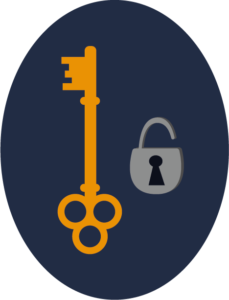
Public key :
The public key is created from the private key and therefore linked to it. It is used to generate Bitcoin addresses, to receive money afterwards. Sharing your public key involves privacy risks but no security risks.

Public address :
In order to receive money, we use public addresses. These are generated by your wallet and can be shared securely. It is recommended to use them only once (avoid address reuse) to maximize your privacy.
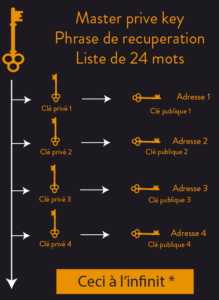
But where are the bitcoins stored?
So the bitcoins are in the wallet? Nope!
Your bitcoins are stored in the Bitcoin database, the blockchain. Indeed, your wallet is actually just a keychain. It does not physically store bitcoins but allows access to them using the private key, effectively enabling transacting with them. Even if your bitcoins do not have any physical existence, holding your list of 24 words can be viewed as having some bitcoins in your pocket that you can actually touch.

Can my wallet get hacked?
No! You can’t hack a private key, that’s just not possible! Our sun will probably explode before a hacker finds your 24 words list. However, if you store your bitcoins on an exchange platform, there is a risk of it being hacked or your identity getting stolen. You also need to consider that the software of the wallets is hackable. You can’t let your wordlist laying around anywhere!
The probability of finding a specific 24 words seed phrase (security of 256 bits) is:

Section 2 – Which wallet to choose?
Choose accordingly to your use cases
We all are different and thus need various security features around our Bitcoin wallets. So it’s essential to be able to answer those questions:
– How much do you plan to secure?
– Whose money is this?
– What use will you make of it?
– What are your technical skills?
– What is your security budget?
Once we have our clear goal, we can choose a suitable wallet. For starters, a mobile wallet like Samourai Wallet on Android or Blue Wallet on iOS does the trick.
After a while, you’ll need to switch to a cold wallet like the Trezor or Ledger ones. If you have more specific needs, you’ll have to resort to professional or complex solutions adapted to your constraints.

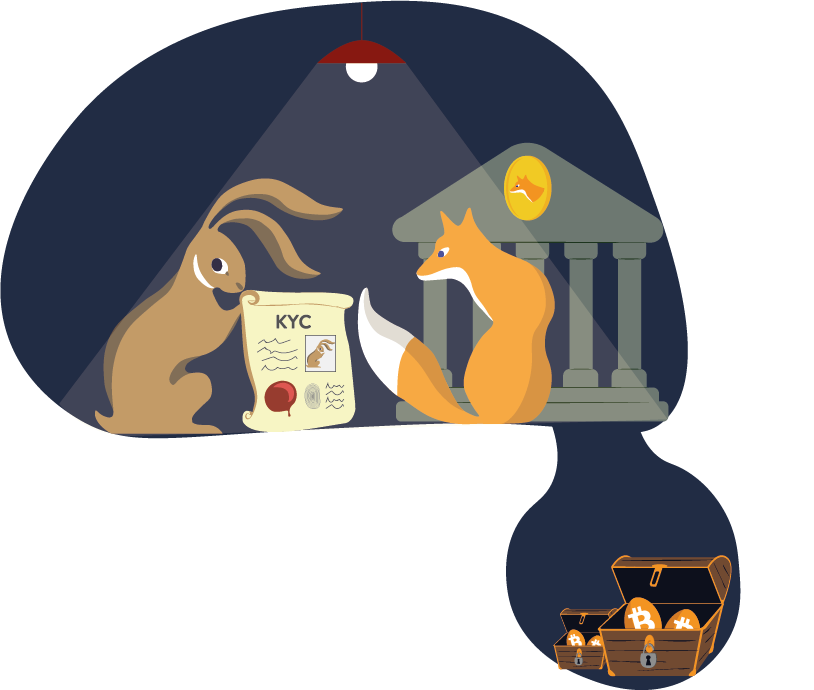
The risk of outsourcing storage
A custodial solution makes you entrust your bitcoins to a third party, as in the banking system.
This mechanism does not embrace the Bitcoin philosophy: you can’t be sovereign or keep your privacy! The risks of a hack are considerable, both on the platform and user sides.
Do not use it without knowledge of the risks and thorough analysis of the proposed service.
Not your keys, not your coins!
Choosing the adequate security
– Level 1: private key
Easy to set up, this is the solution to start with. The seed phrase (list of 12 or 24 words) will allow you to always have access to your bitcoins in case of wallet loss and protects you from hackers.
You lose your list and your bitcoins are lost too!

– Level 2: Securing your bitcoins
The passphrase enables increased security to complement the private key. This new password creates another bitcoin wallet on top of the regular wallet. You can add as many passphrases as you want on top of the same 24 words list.
You lose your passphrase and your bitcoins are lost too!

– Level 3 : Multisig
The creation of a new wallet by combining 3 existing wallets. With this mechanism, 2 keys out of the 3 must approve each transaction. The multi-sig enables the division of a wallet between different people.
Please consider the risks and benefits of multisig before you start!

At the citadel gates, only those who possess their keys shall be able to pass.
Don’t get fooled!
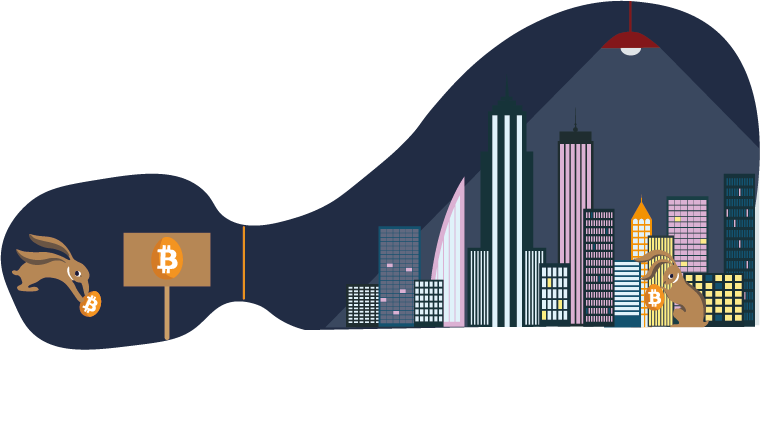
Section 3 – Setting up your wallet
Adventure begins!
You’ll finally become sovereign over your own bitcoins. Kudos to you! Within Bitcoin, mistakes are usually costly so please be careful to follow the rules.
Being financially free is hard but our community is here to assist you.
If in doubt, just ask 🙂

Pitfalls to be avoided
– Never split your word list in half.
– Never take a picture of your words.
– Never put your words in your phone contact list.
– Never leave your words unattended on your desk.
– Never hide your word list in an unusual place.
Don’t play the sorcerer’s apprentice!

Step 1
Get a wallet:
– Mobile: Blue Wallet / Samourai Wallet (free)
– Device: Ledger / Trezor (60$)

Step 2
This 24 word list represents your money.
- Don’t take a photo
- Don’t share it
- Write it down in order
- Immediately backup it!

Step 3
– Store your copies in two different and safe places.
– Set up your legacy plan.
– Check your backups every six months.
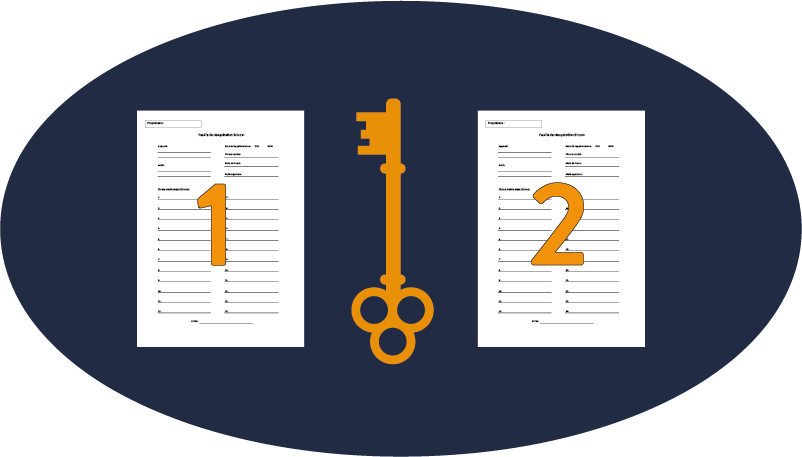
The sovereign individual
This 24 word list is also the backup of your wallet.
Therefore, you can delete the wallet and, with the help of these 24 words, get your bitcoins back.
You can use these words on various software, wallets and applications all over the world.
If a thief or a third party gets access to these words, then they own your bitcoins.
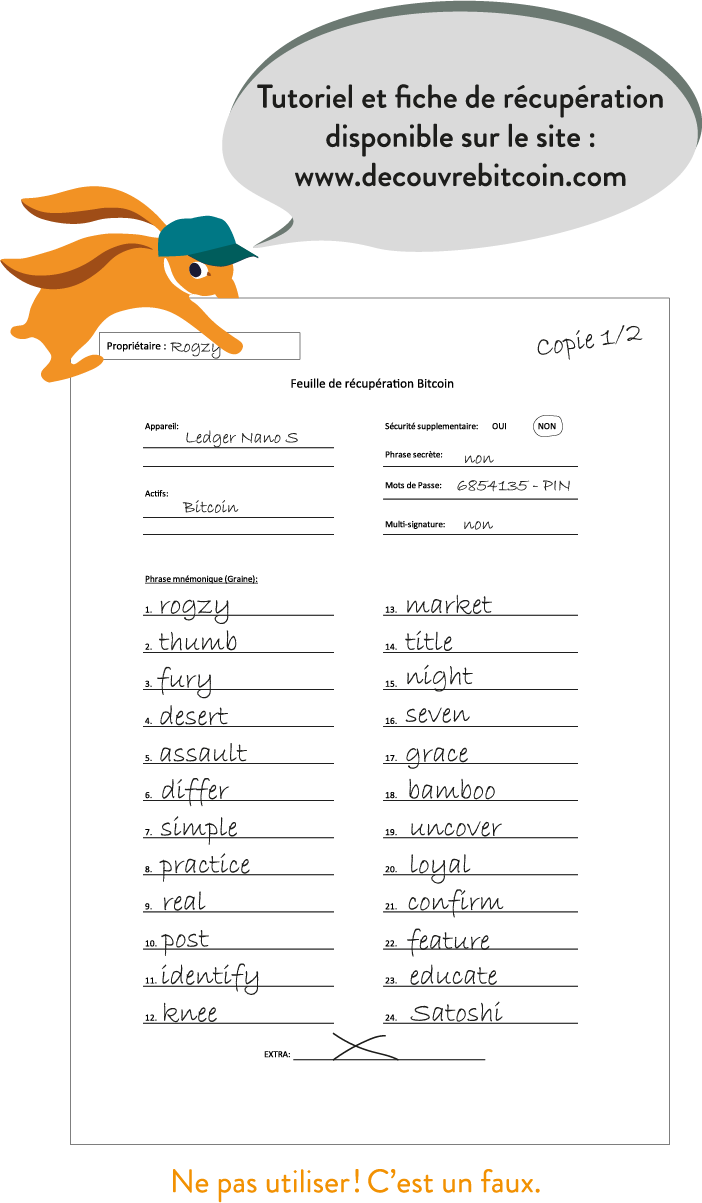
Do not use, it’s an example !
Section 4 – Protecting yourself against time
Who said becoming unbanked was easy? It is not a simple task to be a Bitcoiner. Here are some last steps for the most passionate among you!
Legacy plan
If your loved ones can’t access your bitcoins in case of a serious issue, you need to remedy that with a legacy plan!
Design it as a treasure hunt for your bitcoins. It explains what it is, your inventory, how to access it and other important information. This legacy plan is one of the last steps, we don’t procrastinate!
– Step 1 :
Choose 2 or 3 people to help. Those are people you will trust to help your family figure out how to get all your belongings back.
– Step 2 :
Produce a simple inventory: list all important devices and information about your bitcoins (devices, wallets, private keys, backup locations and passphrases). Don’t be specific about the location, just general (example: Bob’s place).
– Step 3 :
Write a letter, make a copy, legally register it!
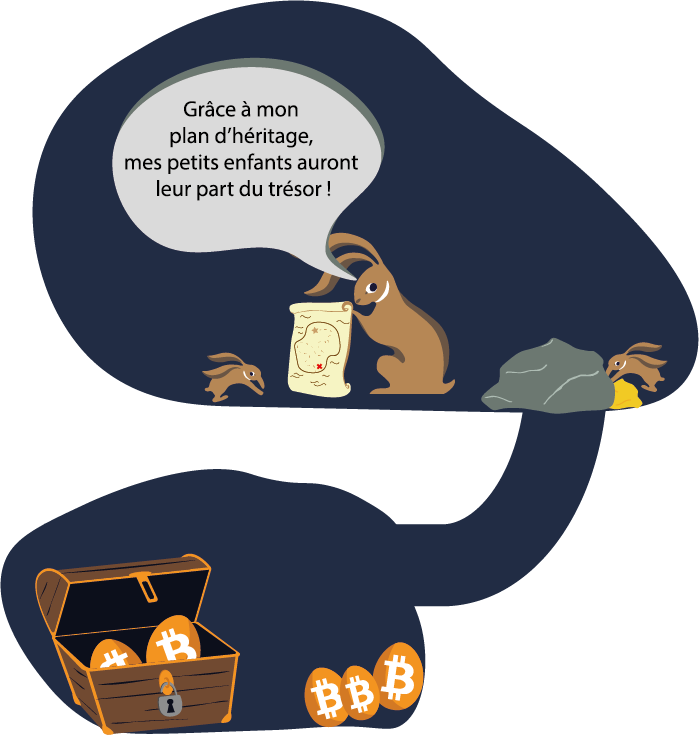
The paranoid Bitcoiner
If you really wanna go hardcore, here are some leads for you:
– Buy noKYC BTC
– Mix your UTXOs
– Name your UTXOs
– Upgrade your security if necessary
– Upgrade to a Coldcard
– Keep an Opendime on you
– Connect your wallets to your node
– Memorize your seed phrase
– Avoid boats
It takes a long road to become a Bitcoiner. Get help from the community and never give up. See you at the citadel!
Facing the elements
No more paper and natural hazards!
The solution is simple: engrave your words in steel.
You can do this by yourself for a small fee or using a third party product. This step is pretty fun and accessible to everyone.
You’ll spend about 40 euros on materials and the operation takes around 30 minutes.

Step 1
Get the required supplies:
– 14mm washers
– A flathead screw
– A letter and number metal stamps set
– A blockmit
For a ready-made solution, things like seed plates or steel-capsules can be purchased for an amount between 40€ and 80€.

Step 2
– Engrave the private key on the steel washers.

Step 3
– Lock everything together
– Test it
– Store it
– Repeat as many times as possible

